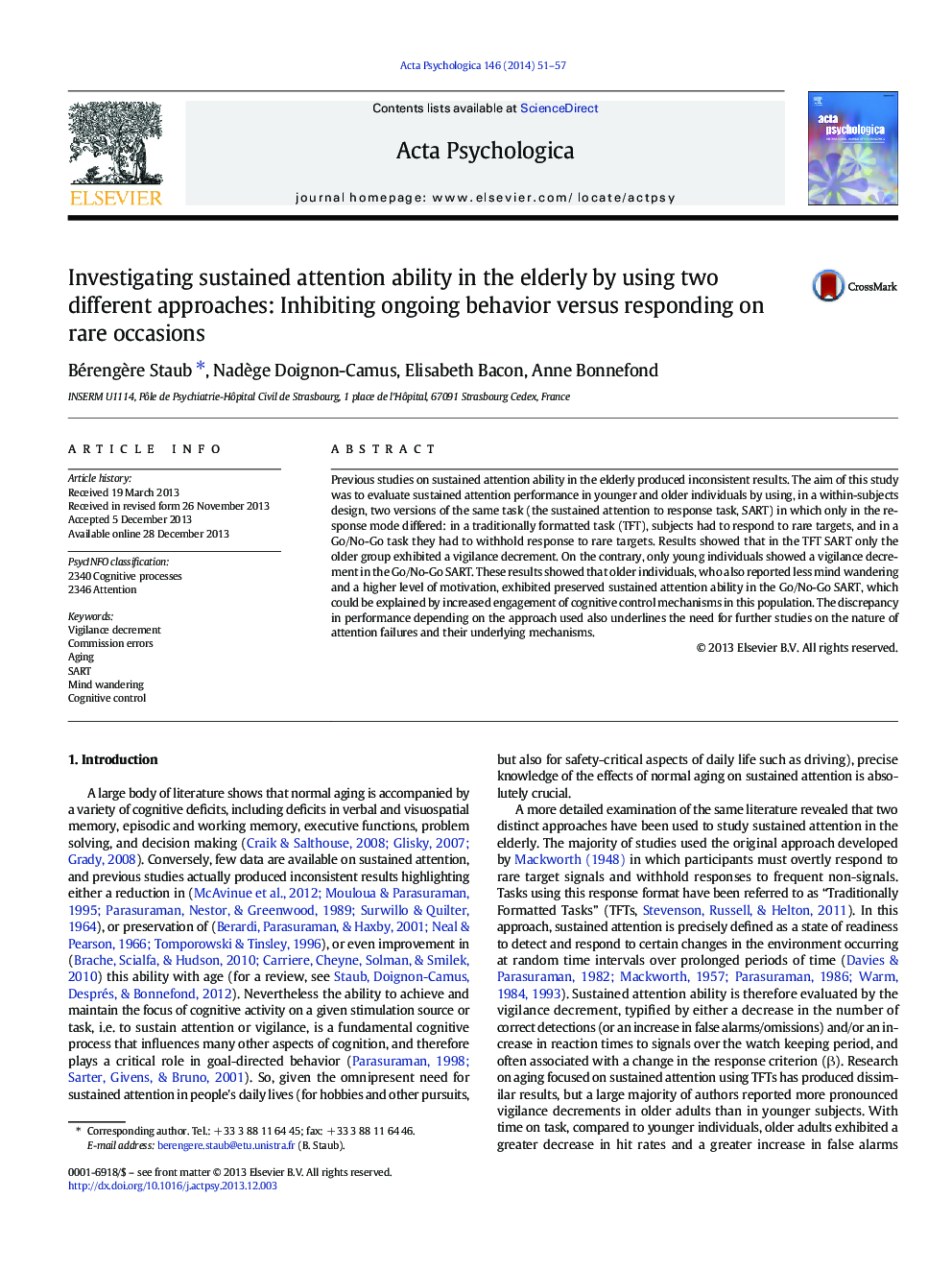| Article ID | Journal | Published Year | Pages | File Type |
|---|---|---|---|---|
| 7277999 | Acta Psychologica | 2014 | 7 Pages |
Abstract
Previous studies on sustained attention ability in the elderly produced inconsistent results. The aim of this study was to evaluate sustained attention performance in younger and older individuals by using, in a within-subjects design, two versions of the same task (the sustained attention to response task, SART) in which only in the response mode differed: in a traditionally formatted task (TFT), subjects had to respond to rare targets, and in a Go/No-Go task they had to withhold response to rare targets. Results showed that in the TFT SART only the older group exhibited a vigilance decrement. On the contrary, only young individuals showed a vigilance decrement in the Go/No-Go SART. These results showed that older individuals, who also reported less mind wandering and a higher level of motivation, exhibited preserved sustained attention ability in the Go/No-Go SART, which could be explained by increased engagement of cognitive control mechanisms in this population. The discrepancy in performance depending on the approach used also underlines the need for further studies on the nature of attention failures and their underlying mechanisms.
Keywords
Related Topics
Life Sciences
Neuroscience
Cognitive Neuroscience
Authors
Bérengère Staub, Nadège Doignon-Camus, Elisabeth Bacon, Anne Bonnefond,
